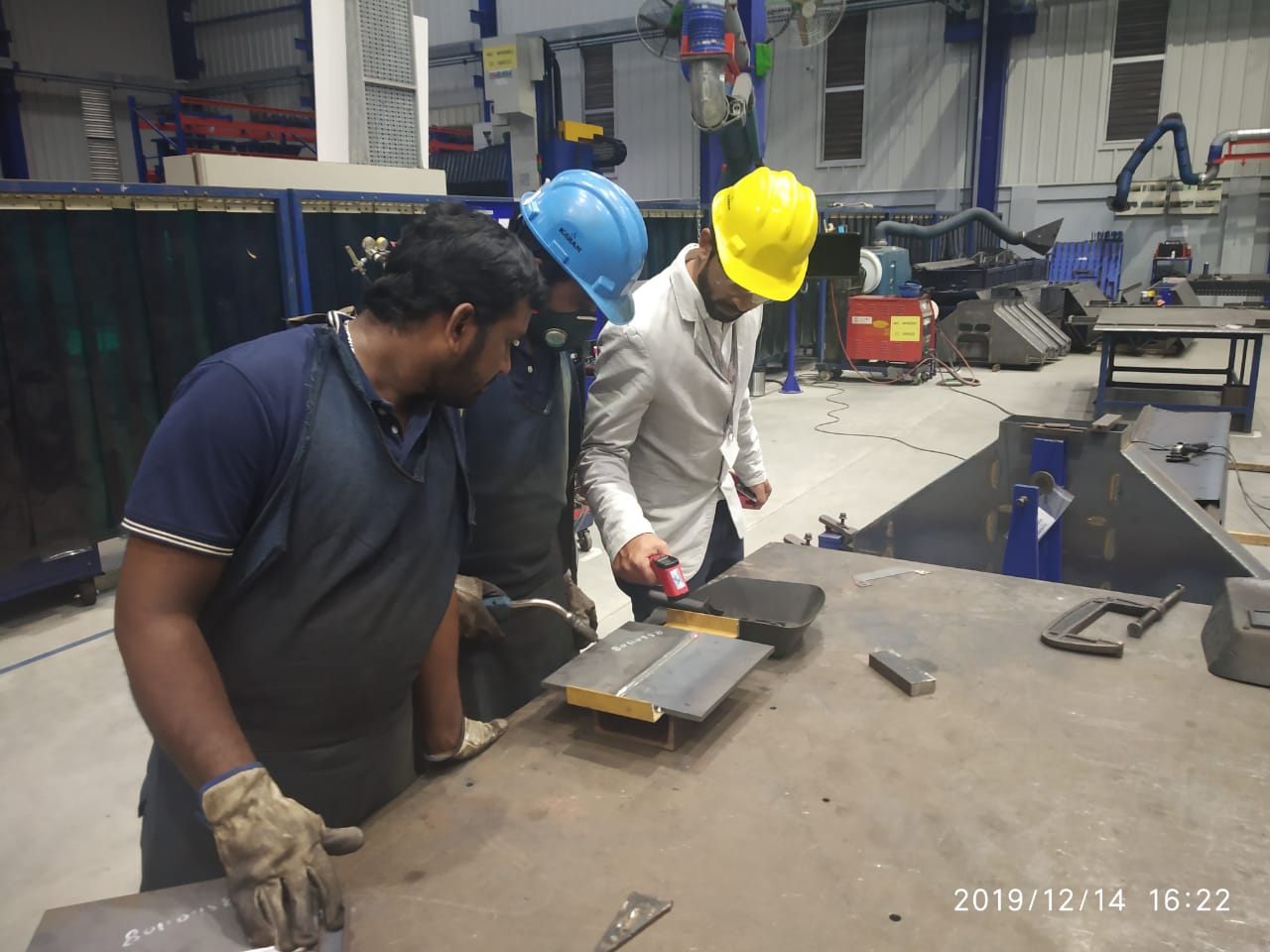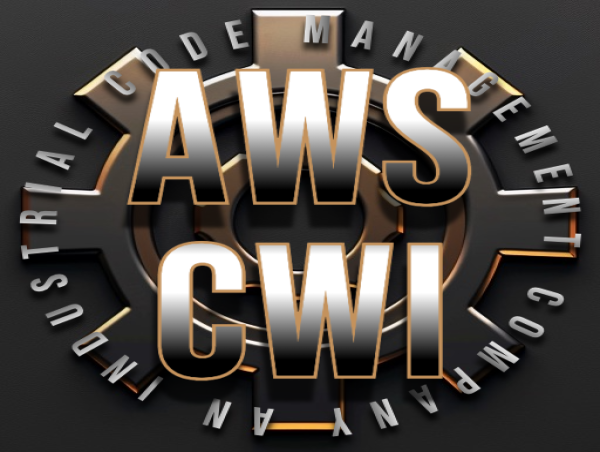How to Prepare for a Welding Inspection Milwaukee Professionals Recommend
How to Prepare for a Welding Inspection Milwaukee Professionals Recommend
Blog Article

Discovering the Various Techniques and Standards of Welding Examination for Getting Compliance and Reliability in Engineering Applications
The value of welding assessment in engineering applications can not be overemphasized, as it serves as an important guard for making sure architectural honesty and conformity with market standards. Various methods, consisting of visual assessment and progressed non-destructive screening techniques, provide essential understandings into the top quality of welds.
Relevance of Welding Inspection
Welding assessment plays an important function in making sure the integrity and security of bonded structures. This process includes the methodical exam of welds to validate conformity with established criteria and requirements. The relevance of welding examination can not be overemphasized, as it acts as a guard versus possible failures that could arise from insufficient welding techniques. With rigorous examination, flaws such as splits, gaps, and inadequate combination can be determined early, thereby avoiding tragic failings that may lead to architectural collapse or safety and security hazards.
Furthermore, welding examination is vital for keeping quality control throughout the welding process. It ensures that the welds satisfy the necessary mechanical and physical residential properties required for their intended applications. Routine evaluations additionally foster a society of responsibility and continuous renovation within welding procedures, encouraging adherence to ideal techniques and industry criteria.
In regulated markets such as construction, aerospace, and production, rigid welding examination protocols are mandated to abide with legal and security demands. Inevitably, reliable welding assessment not only shields human life and residential property however additionally improves the longevity and reliability of welded structures, making it an important aspect of engineering and building.

Typical Welding Inspection Methods
A variety of evaluation methods are employed to assess the quality and integrity of welds, each tailored to spot particular sorts of problems. Amongst the most common approaches is aesthetic examination, which entails a complete assessment of the weld surface to identify noticeable problems such as splits, damages, and insufficient fusion. This approach is usually the very first step in the assessment process as a result of its simpleness and cost-effectiveness.
Another widely utilized method is radiographic examination, where X-rays or gamma rays permeate the weld to reveal inner issues. This method is specifically efficient for identifying porosity and additions within the weld material. Similarly, ultrasonic screening employs high-frequency audio waves to identify inner imperfections, giving an in-depth evaluation of the weld's stability.
In addition, magnetic particle examination is utilized for ferromagnetic products, enabling the detection of surface area and near-surface defects by observing and applying magnetic fields particle patterns. Dye penetrant testing entails applying a liquid color to the weld surface area, disclosing fractures and various other discontinuities upon evaluation (Welding Inspection Milwaukee). Each of these approaches plays a crucial function in ensuring weld quality and conformity with sector criteria
Non-Destructive Testing Strategies
Non-destructive testing (NDT) techniques are vital devices in the analysis of weld quality, enabling assessors to evaluate the integrity of welded joints without causing damage to the materials. Numerous NDT approaches are used to recognize possible defects, making sure that welds satisfy the required requirements for safety and efficiency.
Among one of the most widespread strategies is ultrasonic screening (UT), which uses high-frequency audio waves to discover interior defects such as voids or fractures. Radiographic testing (RT) utilizes X-rays or gamma rays to produce photos of welds, revealing any discontinuities within the material. Magnetic particle testing (MT) is effective for discovering surface and near-surface flaws in ferromagnetic products with the application of electromagnetic fields and contrasting particles.
Liquid penetrant testing (PT) is an additional commonly utilized method that entails using a color to the surface area of the weld, which permeates into any type of cracks, making them visible under ultraviolet light. Each of these approaches supplies special advantages and constraints, and the choice of an ideal technique is crucial to achieving precise evaluations of weld honesty. Eventually, the application of NDT strategies substantially contributes to the integrity and security of design applications.

Regulative Standards and Conformity
In the world of welding assessment, adherence to regulatory criteria and compliance is paramount to make sure the safety and dependability of bonded frameworks (Welding Inspection Milwaukee). Different companies, including the American Welding Society (AWS), the American Culture of Mechanical Designers (ASME), and the International Organization for Standardization (ISO), have actually developed guidelines that govern welding techniques and inspection procedures. These requirements give a framework for high quality guarantee, detailing the needed certifications for examiners and the methods for analyzing weld honesty
Compliance with these regulative requirements not just improves the architectural honesty of welded assemblies however likewise minimizes threats related to failures, which can have tragic effects. Evaluations should be done making use of defined procedures, including visual, ultrasonic, and radiographic methods, to guarantee that welds meet specified requirements.
Moreover, adherence to these requirements is my link usually needed by legislation, especially in industries such as building, aerospace, and production. Regular audits and certifications are crucial to keep conformity, therefore promoting a culture of safety and security and top quality within organizations. Eventually, regulatory criteria and compliance act as the backbone of trustworthy welding assessment techniques, making sure that engineered frameworks meet both efficiency expectations and security requirements.
Finest Practices for Welding Inspection
While keeping compliance with governing standards is crucial, applying best techniques for welding inspection better enhances the safety and security and stability of bonded structures. Efficient welding inspection begins with complete planning, which consists of understanding the certain requirements of each job and ensuring inspectors are well-trained in relevant approaches and standards.
Utilizing a comprehensive examination list assists to make sure all essential aspects are examined, such as weld dimension, penetration, and visual problems. Non-destructive screening (NDT) strategies, such as ultrasonic or radiographic screening, should be employed where appropriate, offering a much more comprehensive analysis of weld quality without compromising the integrity of the materials.
Documentation plays a considerable role in best methods; preserving precise records of evaluations, including photographs, test results, and compliance reports, ensures accountability and promotes future analyses. Additionally, fostering a society of open interaction in between examiners and welders can result in early identification of potential issues, promoting instant restorative actions.
Final Thought
In summary, the implementation of rigorous welding examination approaches and adherence to developed requirements are necessary for making sure compliance and integrity in design applications - Welding Inspection Milwaukee. Methods such as visual assessment, radiographic testing, and ultrasonic screening serve as vital tools in preserving and determining issues top quality assurance. By use this link promoting a society of liability and quality, companies can enhance the stability and longevity of bonded structures, inevitably learn this here now adding to the safety and efficiency of engineering jobs
Various methods, consisting of visual examination and advanced non-destructive screening techniques, give crucial understandings into the top quality of welds.Welding evaluation plays a crucial duty in making sure the integrity and security of bonded frameworks.A variety of assessment approaches are employed to examine the top quality and integrity of welds, each tailored to identify certain types of problems.An additional extensively used technique is radiographic inspection, where X-rays or gamma rays permeate the weld to disclose internal problems.In the world of welding inspection, adherence to regulative requirements and conformity is paramount to make sure the safety and security and reliability of welded frameworks.
Report this page